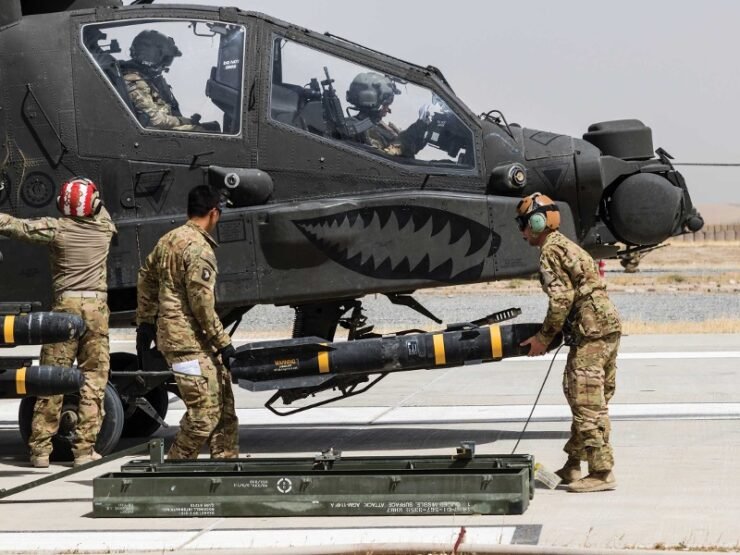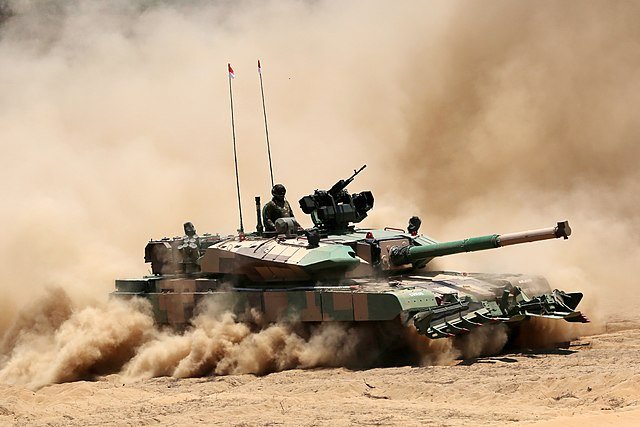
World War I gave rise to the need for an anti-tank weapon to eradicate the aggressive threats of battle tanks. Thereby, several types of new anti-tank warfare systems, ammunition and tactics had been developed as the countermeasure to hostile tanks during the Second World War. Even today, these strike weapons loaded with modern cutting-edge technologies function as among the key deciding factors for victory in land warfare.
A vast range of these combat-proven tank-buster rockets—including air-launched, carrier-launched and man-portable—are fielded by land and air forces worldwide to paralyse a full-fledged armoured corps of rival power. The US Army Javelin and AGM-114 Hellfire, MBDA’s fifth-generation Missile Moyenne Portee (MMP), the Israeli Spike, British Brimstone, Russian Kornet-EM and the Ataka are some of the best tank-killer solutions available worldwide.
Impressed with their anti-tank powers, the Indian Army has inducted some of these systems for its infantry units. Nevertheless, most of the tank-killer armoury of the Indian Army still integrates previous-generation Soviet, Russian and French-made systems—Milan-2T, SHTURM, INVAR, KONKURS-M and Kornet-E. India’s state-run Bharat Dynamics Limited is now locally producing some of these missile systems.
The Indian Army has launched the process of acquiring new advanced anti-tank guided missiles (ATGMs) from Indian and foreign vendors. Currently, the Army has a requirement of around 75,000-80,000 anti-armour rockets of various types.
In 2019, post-Balakot, the Indian Army has decided to procure limited numbers of fourth-generation Spike LR anti-tank guided missiles from Israel’s Rafael Advanced Defence Systems (RADS) to urgently meet the operational requirements of infantry units at the western border.
Under the agreement, the Army ordered around 260 Spike LRs with 12 launchers as an emergency purchase by using it’s freshly given financial powers for limited armament purchase.
The man-portable variant of Spike, ordered by India, houses an advanced dual seeker capability (CCD sensor besides infrared sight for day operations) to disable moving targets at ranges of up to 4 km in fully automatic mode.
Under another emergency purchase, New Delhi concurrently procured Russian ‘Ataka’ anti-armour missiles for IAF’s ‘Mi-35 Akbar’ fleet. The ‘Ataka’ air-launched system is an enhanced and refined variant of the previous ‘Shturm’. The missile fitted with radio-guidance can strike a ground target from 6 km in semi-automatic mode.
The Indian Air Force also received hundreds of US-made AGM-114 Hellfires from the Apache-attack helicopter deal signed in 2015. AGM-114 Hellfire is deemed the world’s most capable air-launched anti-armour weapon against highly manoeuvrable and aggressive battle tanks. It can paralyse a highly protected armoured vehicle with supersonic speed at ranges up to 10-12 km. Together with the IAF fleet of 22 Apaches, these Hellfires will be equipped on the upcoming fleet of six AH-64E helicopters cleared for the Indian Army Aviation Corps.
To meet the Army’s massive requirement indigenously, Indian missile engineers at DRDO worked tirelessly to validate the strike forte of India’s first anti-tank guided missile–Nag. After three decades of hard work, it is now battle-ready.
Several other versions of the third-generation ATGM are also in advanced stages of development and will be inducted soon by Indian defence forces in large numbers.

Earlier, New Delhi had ditched a plan to acquire Spike ATGM system worth over $500 million from Israel’s Rafael in favour of desi anti-tank weapons. BDL is working with DRDO to deliver the first batch of 300 desi anti-tank missiles to the Indian Army. Along with the missiles, the Army will also receive 25 modified BMP-2s launchers named ‘NAMICA’ for deploying these tank-killers.
The indigenous missile equipped with RCI’s infrared seeker and a CCD camera is highly capable of destroying a moving tank and its modern armour in fully automatic mode at a range of 4 km in all-weather conditions, even in a hot desert. It has cleared all the Army trials and is ready for deployment at border areas.
DRDO is also working on three different variants, apart from the vehicle-launched Nag. They are the Helina, MPATGM and Stand-off Anti-tank (SANT) missiles. At the same time, a smaller canon-launched and laser-guided CLGM is also being readied for the indigenous main battle tank Arjun-Mk1A.
ARDE has already performed missile test-firing from the tank, and this 120mm weapon can neutralise any land targets, moving vehicles and low flying aircraft at ranges between 1.5 km and 5 km.
In a development for indigenous attack helicopters—LCH and Rudra, Helina is a next-generation helicopter launched ‘fire-and-forget’ strike weapon with double the range of Nag. All the trials of this weapon have been completed this year, and it is ready for induction in the Army. However, the Air Force variant of Helina known as ‘Dhruvastra’ is still a few tests away and will be ready for Air Force service by next year.
The long-range SANT, an advanced NLOS (non-line-of-sight) version of Helina with a different RF seeker, will allow helicopters and UCAVs to disable armoured targets at longer ranges beyond 10-12 km. For superior end-game performance, the missile is equipped with a state-of-the-art MMW seeker being produced by Indian private industry.

Besides the seeker, the advanced guidance and tracking algorithms and avionics with integrated software help the missile achieve its top performance during a strike. DRDO and Indian Air Force have completed several flight testings’ of this newly developed Stand-off weapon. Once ready, the Mi-35 fleet of IAF will be first to equip with this extended-range rocket.
India has made considerable progress in man-portable systems, and several 3rd generation man-portable anti-tank guided missiles (MPATGM) are being developed indigenously by DRDO and the industry.
The 14.5-kg DRDO-MPATGM is in the final development stage and will be ready for Army trials in 2022. It integrates modern dual-mode terminal guidance for end-game, miniaturised avionics and innovative propulsion with a jet vane control (JVC) system. In top/direct attack mode, the missile can achieve a high subsonic speed and kill a mobile target from 2.5 km.
Indian state-owned missile maker BDL has also launched a new 3rd generation man-portable system dubbed Amogha-III. The missile is being developed with DRDO assistance, and it will feature the range and attack capabilities same as DRDO-MPATGM.
In 2017, India’s multinational engineering conglomerate and major defence player, Larsen & Toubro, set up a joint venture with MBDA to develop and supply missiles and missile systems to meet the growing potential requirements of the Indian armed forces. The joint venture, L&T MBDA Missile Systems Limited, has already offered MBDA’s 5th generation man-portable MMP (Missile Moyenne Portee) to the Army under a ‘Make-In-India’ route.
Moreover, an Indian private defence firm, VEM Technologies, has also announced the in-house development of a new man-portable missile for the Indian Army. VEM’s MPATGM, known as ASIBAL, weighs 18.5-kg and features the company’s in-house produced day/night capable dual-mode MWIR sight and a compact fire control unit (FCU) for management and target acquisition. This lightweight top/direct attack anti-armour weapon has a target destruction range similar to DRDO-MPATGM.
With so many new-generation anti-tank solutions in its hands, the Army, eventually, will restore its anti-tank warfare strengths against its rivals. And thousands of old-generation ATGMs will be replaced by these desi systems in the future.
(The writer is a defence journalist-analyst)











